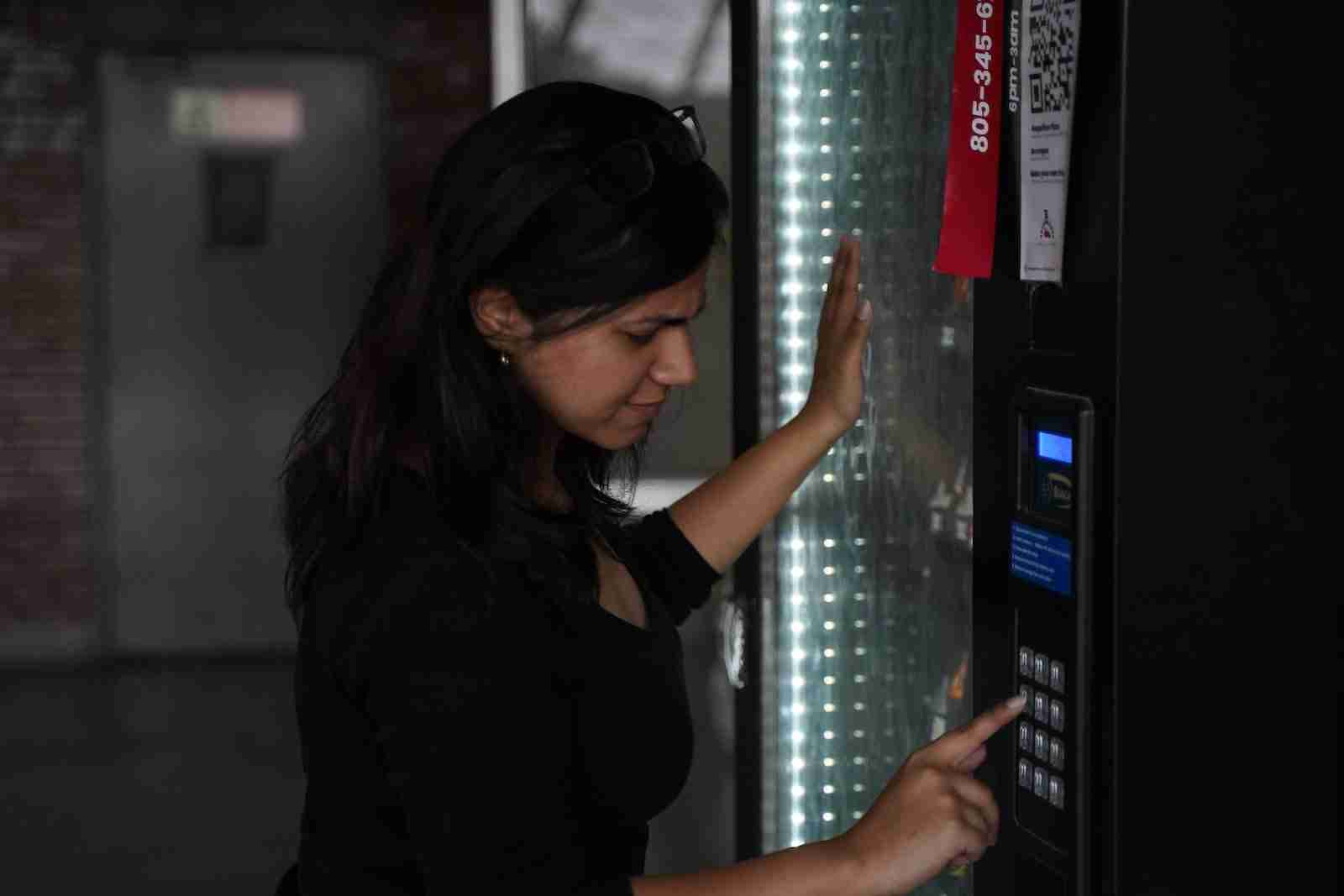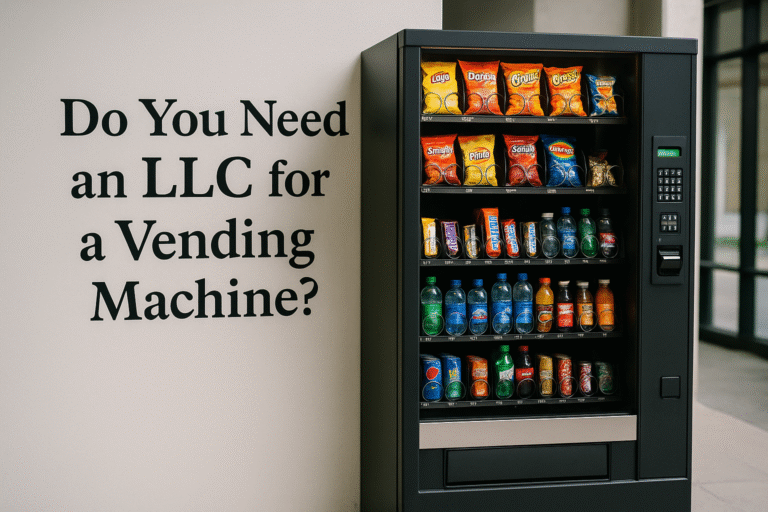¡Envío fijo a Puerto Rico: $1,200 en tu primera máquina y solo $375 por cada adicional! Envíanos un WhatsApp
From Revenue to Riches: Demystifying Vending Machine Business Profits

Vending machine profit potential has long sparked interest among budding entrepreneurs. Set against the backdrop of bustling corridors in busy office spaces and crowded public areas, vending machines stand as silent salesmen. Offering both convenience and a wide array of snacks and beverages, these machines are more than just on-the-go snack solutions. But how exactly does one tap into the profitability of this venture? What are the nuances and intricacies that drive the revenues of these machines? This guide aims to dissect these questions, providing clarity on the elements that sway the profitability of the vending machine business.
The Allure of Vending Machines: Understanding the Business Basics
Vending machine businesses have long been a beacon of attraction for potential entrepreneurs. Their presumed passive income potential and widespread reach in various environments, from offices to public places, make them a lucrative venture to consider. But as with any business, it’s essential to comprehend its foundational aspects before diving in.
Initial observations might depict a simple transaction process: a customer inserts money, chooses a product, and the machine dispenses it. However, multiple gears turn behind the scenes to make this operation seamless. Factors like location, product relevance, maintenance, and even the type of vending machine play crucial roles in determining profitability.
Being armed with a clear understanding of the business’s nuances is the first step towards ensuring sustained vending machine profit. Knowledge is power, and in this realm, it’s the driving force behind turning coin drops into consistent revenue streams.
Setting the Stage: Initial Investment and Associated Costs
The journey into the vending machine business starts with an initial investment. This includes purchasing the machine, stocking it with products, and securing a location. Though the upfront costs can be daunting for some, it’s essential to view them as foundational pillars for future profitability.
Different machines come with varying price tags, influenced by factors like size, functionality, and technology. For instance, a machine with cashless payment options might cost more than a basic model but could attract a broader customer base. Additionally, product stocking costs fluctuate based on items chosen. Perishable goods might require frequent replenishment, impacting expenses.
Analyzing these costs against potential returns is paramount. This involves not just calculating the break-even point but also understanding the recurring expenses associated with the venture. An informed decision at this stage can set the trajectory for long-term vending machine profit.
Pinpointing Prime Spots: The Importance of Location in Profitability
Location is a critical determinant in the vending machine business’s success. A machine placed in a high-footfall area like a busy office corridor or transportation hub can witness increased sales, boosting vending machine profits. On the contrary, a secluded spot might see lesser traction, affecting revenue.
It’s not just about footfall; understanding the demographics of the location is equally vital. A machine near a gym might see higher sales of health beverages and protein bars, while one in a college might fare better with snacks and sodas. Thus, tailoring product offerings based on location demographics can enhance profitability.
Securing an ideal spot often involves negotiations with property managers or business owners. Effective communication, understanding mutual benefits, and sometimes even revenue-sharing models can pave the way for lucrative vending machine locations, amplifying profits.
Curating Product Offerings: The Balance Between Demand and Profit Margins
In the vending machine business, profits often hinge on the products stocked. While it’s tempting to fill machines with popular items, it’s vital to strike a balance between demand and profit margins. After all, even high-selling items might not be profitable if their cost price is too high or if they expire quickly.
Vending machine profit is also influenced by evolving consumer trends. For instance, as more people become health-conscious, there’s a growing demand for healthier snack options. Keeping abreast of these trends and adjusting the product mix accordingly can be a game-changer in maximizing revenue.
Additionally, rotating products seasonally or based on specific events or holidays can provide a freshness to the offering. This not only caters to changing customer demands but also gives regular patrons something new to look forward to, ensuring consistent sales and boosting vending machine business profits.
Technological Advancements: Modernizing for Maximum Profitability
Embracing technology can play a pivotal role in increasing vending machine profits. Modern machines come equipped with features like digital payments, touchscreen interfaces, and even remote inventory monitoring. While these might increase the initial investment, they can significantly enhance the user experience, leading to more sales.
Digital payment options, in particular, cater to a growing demographic that prefers cashless transactions. By providing multiple payment gateways, from credit cards to mobile wallets, vending machine operators can cater to a broader customer base, thus increasing their profit potential.
Moreover, data analytics derived from these technological integrations can offer insights into sales patterns, popular products, and peak sales times. This information can guide restocking schedules, promotional offers, and even pricing strategies, further optimizing vending machine business profits.
Maintenance and Upkeep: Ensuring Smooth Operations and Sustained Vending Machine Profits
Regular maintenance of vending machines is crucial to ensure uninterrupted service and consistent revenue flow. A machine that frequently malfunctions or is out of order can quickly deter potential customers, adversely affecting vending machine profits.
Scheduled checks can help in early identification of issues, be it mechanical problems or software glitches. It’s also essential to keep the machine clean, both externally and internally. A well-maintained machine not only functions optimally but also presents a more inviting look to customers.
Additionally, addressing customer feedback or complaints promptly can enhance the machine’s reputation. A business that shows it values its customers by ensuring its machines are always in top condition is more likely to see repeat sales, bolstering its vending machine profit margins.
Understanding Customer Preferences for Vending Machine Profit Maximization
Vending machine profits often hinge on a profound understanding of customer preferences. Diverse locations come with varied demographics, and catering to their unique tastes can significantly boost sales. For instance, a machine in a corporate office might see a higher demand for coffee and healthier snacks, while one in a gaming arcade might profit from sodas and candies.
Regularly gauging feedback, either through direct interaction or sales data analysis, can be invaluable. This not only helps in tailoring the product mix but also in anticipating shifts in demand. For example, a sudden health trend in a community might lead to increased sales of green teas or protein bars.
Moreover, with advancements in technology, even vending machines can have interactive interfaces. These can capture direct feedback from customers, provide information on products, or even run quick surveys. This real-time data can be a treasure trove for understanding preferences and optimizing vending machine profits.
Addressing Competition and Market Saturation for Enhanced Vending Machine Profits
The lure of vending machine business profits has attracted many entrepreneurs, leading to increased competition. Especially in lucrative locations, one might find multiple vending machines vying for customer attention. Differentiating oneself becomes imperative in such scenarios.
Offering unique products, ensuring machine hygiene, and perhaps even incorporating interactive elements can make one’s vending machine stand out. It’s also essential to keep an eye out for newer, untapped locations. Sometimes, moving away from the saturated market to a niche spot can lead to increased sales.
Furthermore, collaboration rather than competition can be a strategy. Joining forces with complementary vendors, like a coffee vending machine next to a book stall, can enhance the overall customer experience and, in turn, boost profits.
Prioritizing Security to Boost Vending Machine Profit Amidst Vandalism Concerns
One often overlooked aspect, when contemplating vending machine profits, is the potential loss due to vandalism or theft. A machine stationed in a low-security area might be prone to break-ins, leading to loss of stock and often expensive repairs.
Investing in robust machines with enhanced security features can deter potential vandals. It’s also essential to ensure that the machines are adequately insured against theft or damage. Some locations might also allow for the installation of surveillance cameras, providing an additional layer of security.
Moreover, regular visits, not just for restocking but for general checks, can be a deterrent in itself. A machine that’s frequently monitored sends a message that security is being taken seriously, potentially discouraging any malicious intent and thus safeguarding vending machine profits.
Evaluating Profitability and Return on Investment (ROI)
At the end of the day, understanding the ROI is crucial to determining the success of a vending machine venture. Keeping meticulous records of all expenditures, from machine purchase to restocking costs, and comparing it with the revenue can provide clear insights into profitability.
Periodic evaluations, say quarterly or biannually, can be beneficial. This not only helps in understanding the current profitability status but also in forecasting and planning for the future. It can guide decisions, from tweaking product selection to potentially relocating the machine.
Furthermore, it’s essential to set realistic expectations. While vending machine business profits can be lucrative, expecting an immediate return on investment might lead to disappointment. Patience, combined with diligent management and a keen understanding of the market, can pave the way for sustained profitability.
Conclusion
The world of vending machines is more than just coins, snacks, and cold drinks. It’s a dynamic realm of business, influenced by multiple factors ranging from location and product selection to market trends and customer preferences. While the prospect of passive income and scalable operations is appealing, achieving sustained vending machine business profits requires a blend of strategic planning, market insights, and adaptability. With the right approach and continuous learning, entrepreneurs can navigate the challenges and harness the true profit potential of this unique business venture.




